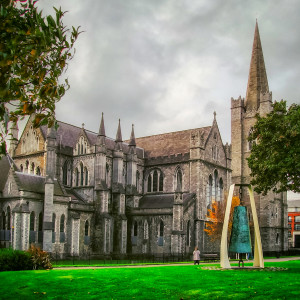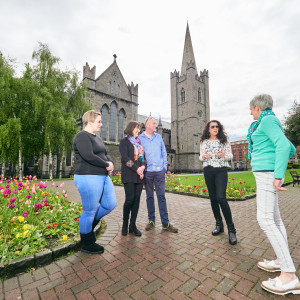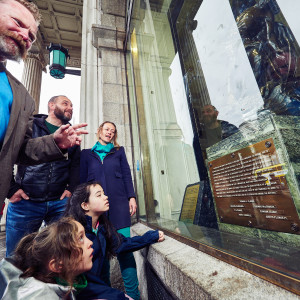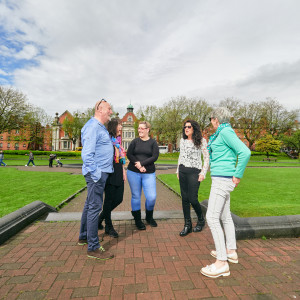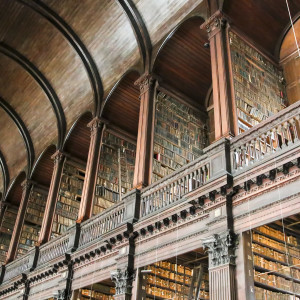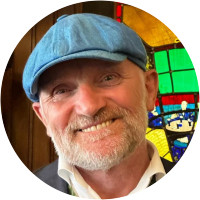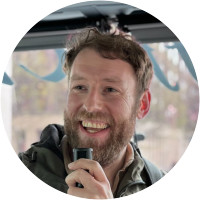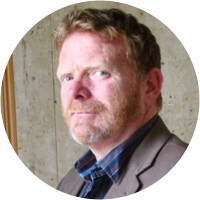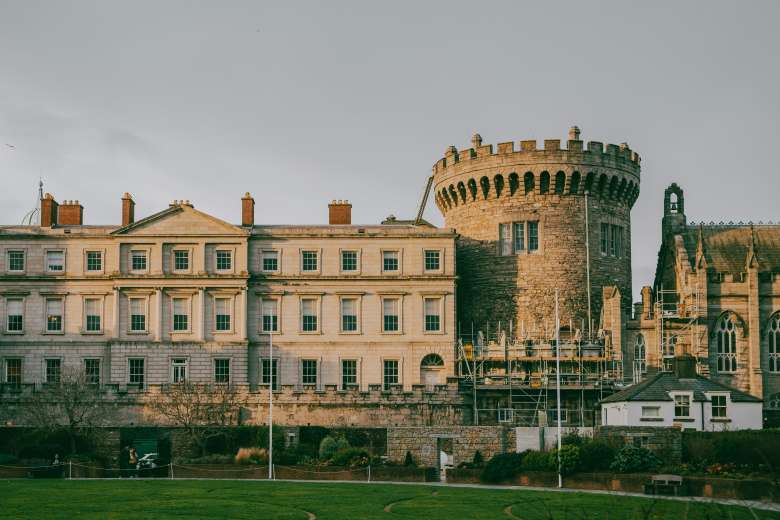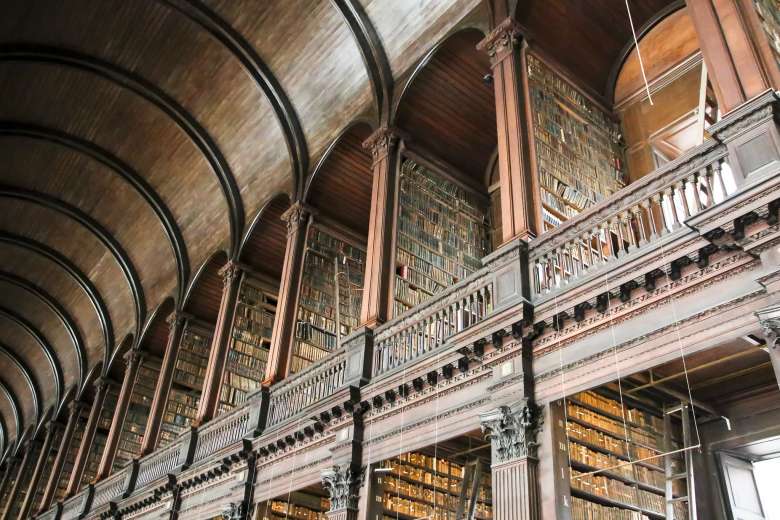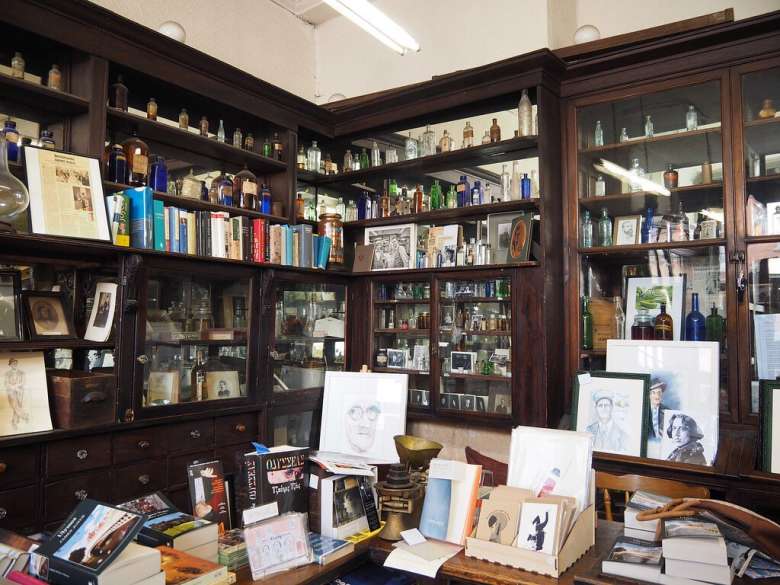Tour Details
- Duration
- 6.5 hours
- Product Type
- Tour
- Venues
-
- Dublin Castle
- St. Patrick's Cathedral
- General Post Office
- Book of Kells
- National Museum of Ireland - Archaeology
Tour Description
Immerse yourself in the fascinating history and geography of Ireland's capital city on this 7-hour walking tour. We’ve carefully crafted an itinerary led by one of our expert guides, that will pass over Dublin Castle and St. Patrick’s Cathedral. We will finish at the illustrious Old Library in Trinity College where you will view and learn about the fascinating Book of Kells. This tour is a fantastic introduction to the Irish capital and its treasures.
PLEASE NOTE: Guiding is not allowed in the Old Library and the Book of Kells exhibition. Your expert guide will provide information to enable you to fully appreciate these parts of the tour before visiting the Book of Kells and there will be time for questions afterward.
PLEASE NOTE: Guiding is not allowed in the Old Library and the Book of Kells exhibition. Your expert guide will provide information to enable you to fully appreciate these parts of the tour before visiting the Book of Kells and there will be time for questions afterward.
Sites Visited
- Dublin Castle (exterior only)
- St. Patrick’s Cathedral
- National Museum of Ireland - Archaeology
- Book of Kells
Included
- Includes St. Patrick’s Cathedral
- Tickets to the Book of Kells Experience and exhibition
Itinerary Detail
We will meet in the morning at Bite of Life cafe and make our way to Dublin Castle. As we weave through the captivating medieval streets, we will use a map to orient ourselves and offer you an overview of the Irish capital. Dating back to the 9th Century, this area marks the origins of Dublin as a Viking settlement. We will admire the exterior of the imposing Record Tower Built around 1204-28, one of the oldest and most intact examples of historical Norman battlement architecture. Here, we will learn about the multiple occupants and uses it has had over the centuries. We will admire the adjoining and equally impressive, but more recently built, Dublin Castle and Chapel Royal. Constructed in the Georgian and Gothic Revival styles, they have hosted many important state events and commemorations. This will give you an insight into the storied and often painful political and social history of Ireland.
Our walk continues through medieval Dublin to the National Cathedral of the Church of Ireland, St. Patrick’s Cathedral. Built between 1220-1260, it ushered in some of the most important developments and changes in Irish Christianity, whilst also holding a pivotal role in many social and political developments of the country. Hear about the intriguing relationship between Dublin’s principal brewing family, Guinness, and the Cathedral. Between 1860 and 1865, Benjamin Guinness (the third son of Arthur Guinness II) was concerned by the real fear of the cathedral's possible collapse and generously funded its substantial rebuilding.
Before the grand finale of our tour, we will stop for lunch at an eatery of your choosing. Our guide will introduce you to local Irish cuisine as we dine at a traditional pub or one of Dublin’s great restaurants. Re-energized, we’ll cross the river Liffey, at one of the handful of interesting and historical bridges such as Ha’Penny Bridge. Named after the toll for passageway required by any Dubliner who wanted to cross this elliptical arch bridge. We will wander through the eclectic and informal quarter of Temple Bar, where we will admire the architectural variety which houses a number of vital cultural and social institutions.
We’ll finish our time together in Dublin’s foremost tertiary institution, Trinity College where the legendary Book of Kells resides. Created approximately 1200 years ago in a Columban monastery in either Ireland, Scotland, or England, it is considered one of the most beautiful books in the world. Before you enter the Old Library and the Book of Kells exhibition, your guide will speak to the wider social, political, and religious systems through a discussion of techniques, instruments, and materials used in this Latin translation of the Bible. We will see the cross-cultural influences through various decorative techniques gleaned from Celtic, Christian, Islamic, North African, and near Eastern.
After major renovation works, a new digital experience has been inaugurated: The Book of Kells Experience will amaze you with its immersive video illustrations and audio-themed accompaniment. It's an extraordinary voyage that will guide you through the ancient masterpiece's history.
Caution: Book of Kells 360 content contains imagery and moving video that may cause discomfort for those who are sensitive to light or motion or have epilepsy.
After major renovation works, a new digital experience has been inaugurated: The Book of Kells Experience will amaze you with its immersive video illustrations and audio-themed accompaniment. It's an extraordinary voyage that will guide you through the ancient masterpiece's history.
Caution: Book of Kells 360 content contains imagery and moving video that may cause discomfort for those who are sensitive to light or motion or have epilepsy.
At the end of our day together, you will emerge with a deeper understanding of the complex and multi-layered elements that have formed Ireland's capital. You’ll have ventured across the city to sites relevant to Dublin’s historic, cultural, artistic, and religious identity offering you insight into everything from medieval architecture to the best place to get a pint.
FAQs
For more information about Context tours, please visit our FAQs.
Book with confidence — see Context's flexible cancellation policy here.
Which venues will we go inside?
We will explore Dublin Castle from the outside but tickets to visit the Book of Kells inside Trinity college are included with your tour. We don't include a visit inside St Patrick's Cathedral as standard, but many clients choose to. Tickets for the Cathedral aren't included in the tour price so please have some local currency or a credit card on hand for the entrance fee if you wish to go inside.
Does this tour include Trinity College?
We will walk through Trinity College to access the Book of Kells exhibition. Please note guiding is not allowed on campus nor at the Book of Kells exhibition. We will provide explanations prior to the walk-through.
We will explore Dublin Castle from the outside but tickets to visit the Book of Kells inside Trinity college are included with your tour. We don't include a visit inside St Patrick's Cathedral as standard, but many clients choose to. Tickets for the Cathedral aren't included in the tour price so please have some local currency or a credit card on hand for the entrance fee if you wish to go inside.
Does this tour include Trinity College?
We will walk through Trinity College to access the Book of Kells exhibition. Please note guiding is not allowed on campus nor at the Book of Kells exhibition. We will provide explanations prior to the walk-through.
Is this tour walking-intensive, and/or wheelchair accessible?
It is accessible with a few adjustments. The Old Library, where the Book of Kells is located, is fully wheelchair accessible. On arrival, we will arrange for a Library Guard to assist you in using our elevator and accessing all areas of the exhibition. At Dublin Castle, we will help you access the State Apartments. St. Patrick’s Cathedral is wheelchair accessible. As these accommodations may add more time to your tour, please let us know at the outset if there are venues, galleries, artworks, or rooms you don’t want to miss.
What if it’s raining?
This tour operates in all weather. Please bring appropriate clothing and maybe an umbrella.
Is this tour appropriate for children?
Yes, please just make a note when purchasing that there will be children on the tour alongside their ages.
Experts
Where You'll Start
–
31 Reviews
Reviews can only be left by Context customers after they have completed a tour. For more information about our reviews, please see our FAQ.
Superb
Doug
Oct 1, 2024
Kevin was amazing! He is an impressive expert on Irish history and has a great sense of humor. We really enjoyed our day today and we very highly recommend him to anyone looking for an informative tour of both Dublin and Irish history - exactly what we were hoping for.
Kim
Sep 29, 2024
Great tour, very knowledgeable. Enjoyed it tremendously.
Jesse
Aug 25, 2024
